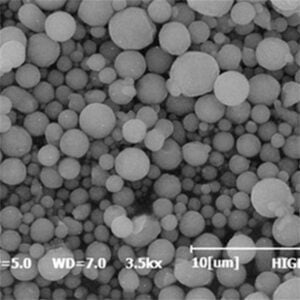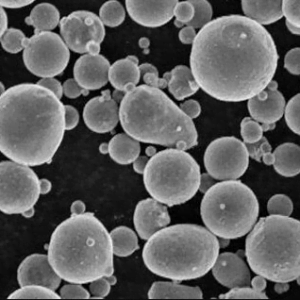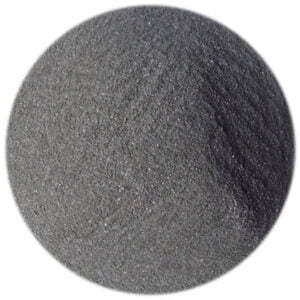Titanium Nanopowder
Table of Contents
Titanium nanopowder is an advanced material characterized by its incredibly small particle size, typically ranging from 1 to 100 nanometers (nm). At this minuscule scale, titanium exhibits unique properties vastly different from its bulk form, making it highly sought-after in various cutting-edge applications. Imagine holding a material so fine that a single grain is thousands of times smaller than the width of a human hair – that’s the remarkable nature of titanium nanopowder.
Produced through advanced techniques like chemical vapor condensation, laser ablation, and high-energy ball milling, titanium nanopowder offers an exceptional combination of strength, lightweight properties, and chemical resistance. Its nanostructure allows for enhanced reactivity, improved thermal and electrical conductivity, and superior mechanical properties compared to conventional titanium materials.
But what makes titanium nanopowder truly extraordinary? Its large surface area-to-volume ratio. This unique characteristic opens up a world of possibilities, from catalytic applications and energy storage systems to advanced ceramics and nanocomposites. Let’s delve deeper into the fascinating realm of titanium nanopowder, exploring its composition, characteristics, applications, and the innovative potential it holds.
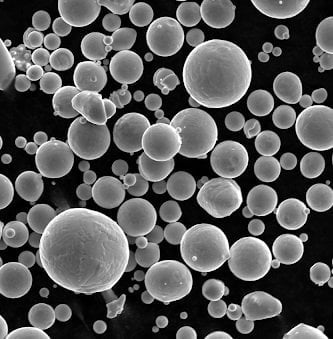
Titanium Nanopowder Composition and Properties
| Property | Description |
|---|---|
| Composition | Titanium (Ti) |
| Particle Size | 1 to 100 nanometers (nm) |
| Morphology | Spherical, irregular shapes |
| Crystal Structure | Hexagonal close-packed (α-Ti) or Body-centered cubic (β-Ti) |
| Specific Surface Area | High, typically > 10 m²/g |
| Purity | Typically > 99% |
| Color | Dark gray to black |
Titanium nanopowder’s composition is pure titanium, a lightweight yet incredibly strong transition metal known for its exceptional corrosion resistance and high strength-to-weight ratio. However, at the nanoscale, titanium’s properties are amplified, exhibiting superior reactivity, increased surface area, and enhanced mechanical, thermal, and electrical characteristics.
Imagine a single grain of titanium nanopowder – a speck so tiny that millions could fit on the tip of a pencil. Yet, within this minuscule particle lies immense potential, owing to its remarkable properties. The high specific surface area, often exceeding 10 square meters per gram, contributes to its exceptional reactivity and catalytic capabilities.
But that’s not all – titanium nanopowder can exist in two distinct crystal structures: hexagonal close-packed (α-Ti) or body-centered cubic (β-Ti), each with its unique properties and applications. This versatility allows manufacturers to tailor the material’s performance to meet specific requirements, whether it’s enhanced strength, improved ductility, or superior corrosion resistance.
Industrial Applications of Titanium Nanopowder
| Application | Description |
|---|---|
| Catalysis | Used as a highly efficient catalyst in various chemical reactions due to its high surface area and reactivity. |
| Energy Storage | Incorporated into electrodes for lithium-ion batteries, supercapacitors, and fuel cells, enhancing energy density and power delivery. |
| Nanocomposites | Reinforcement material for polymers, ceramics, and metals, improving mechanical properties and wear resistance. |
| Biomedical | Used in orthopedic implants, dental applications, and drug delivery systems due to its biocompatibility and corrosion resistance. |
| Aerospace | Utilized in lightweight, high-strength components for aircraft and spacecraft. |
| Electronics | Employed in capacitors, sensors, and conductive coatings due to its electrical properties. |
| Environmental | Applied in water treatment, air purification, and catalytic converters for its catalytic and adsorption capabilities. |
Titanium nanopowder’s versatility is truly remarkable, with applications spanning diverse industries and sectors. From catalysis and energy storage to nanocomposites and biomedical engineering, this material has proven its worth time and again.
Imagine a world where chemical reactions are accelerated by the mere presence of titanium nanopowder, acting as a highly efficient catalyst. Its high surface area and reactivity make it an ideal choice for various catalytic processes, from petroleum refining to environmental remediation.
But that’s just the beginning. In the realm of energy storage, titanium nanopowder is revolutionizing the way we power our devices and vehicles. Incorporated into electrodes for lithium-ion batteries, supercapacitors, and fuel cells, it enhances energy density and power delivery, enabling longer-lasting and more efficient energy storage solutions.
And what about the world of materials science? Titanium nanopowder has become an indispensable reinforcement material for nanocomposites, imparting exceptional mechanical properties and wear resistance to polymers, ceramics, and metals. Imagine lightweight yet incredibly strong components for aerospace and automotive applications, all made possible by the integration of this remarkable nanomaterial.
But perhaps one of the most profound applications lies in the biomedical field. Titanium’s biocompatibility and corrosion resistance make it an ideal choice for orthopedic implants, dental applications, and drug delivery systems. With its nanostructure, titanium nanopowder offers enhanced osseointegration (bone integration) and improved tissue regeneration capabilities, revolutionizing the way we approach medical treatments.
From aerospace and electronics to environmental remediation, the applications of titanium nanopowder are truly limitless, driven by its unique properties and the ingenuity of researchers and engineers worldwide.
Specifications and Standards for Titanium Nanopowder
| Specification | Description |
|---|---|
| Particle Size Distribution | Typically 1 to 100 nm, with various size ranges available |
| Purity Levels | High purity (> 99%) and ultra-high purity (> 99.9%) grades |
| Morphology | Spherical, irregular, or agglomerated shapes |
| Specific Surface Area | Ranging from 10 to 50 m²/g, depending on particle size |
| Crystal Structure | Alpha (α-Ti) or Beta (β-Ti) phase, or a mixture |
| Packaging | Inert gas-filled containers or vacuum-sealed bags |
| Safety | Handling and storage guidelines for nanomaterials |
To ensure consistent performance and quality, titanium nanopowder is available in various specifications and grades, adhering to international standards and guidelines. From particle size distribution and purity levels to morphology and crystal structure, manufacturers meticulously control these parameters to meet the diverse requirements of different applications.
Particle size is a critical factor, with typical ranges from 1 to 100 nanometers, but specific sizes can be tailored to suit particular needs. Purity levels range from high purity (> 99%) to ultra-high purity (> 99.9%), ensuring minimal contamination and consistent performance.
Morphology also plays a crucial role, with titanium nanopowder available in spherical, irregular, or agglomerated shapes, each offering unique advantages in terms of dispersion, reactivity, and processability.
To maximize the potential of titanium nanopowder, manufacturers carefully control the specific surface area, typically ranging from 10 to 50 square meters per gram, depending on the particle size. This parameter is crucial for catalytic applications, energy storage, and nanocomposites, where high surface area translates to enhanced reactivity and improved performance.
Moreover, titanium nanopowder can exist in two distinct crystal structures: alpha (α-Ti) or beta (β-Ti) phase, or a combination of both. This versatility allows for tailoring the material’s properties, such as strength, ductility, and corrosion resistance, to meet specific application requirements.
Proper packaging and handling are essential to ensure the integrity and safety of titanium nanopowder. Inert gas-filled containers or vacuum-sealed bags are commonly used to prevent oxidation and contamination, while adhering to strict guidelines for handling and storage of nanomaterials.
Titanium Nanopowder Suppliers and Pricing
| Supplier | Location | Price Range (USD/kg) |
|---|---|---|
| Alfa Aesar | United States | $200 – $1,000 |
| American Elements | United States | $150 – $800 |
| Stanford Advanced Materials | United States | $250 – $900 |
| Strem Chemicals | United States | $300 – $1,200 |
| Nanoamor | United States | $180 – $950 |
| US Research Nanomaterials | United States | $220 – $850 |
| SkySpring Nanomaterials | United States | $180 – $900 |
| Nanoshel | United States | $200 – $950 |
| Plasmachem GmbH | Germany | €250 – €1,100 |
| Nanostructured & Amorphous Materials | United States | $250 – $900 |
The global market for titanium nanopowder is served by numerous suppliers, ranging from well-established corporations to specialized nanomaterial manufacturers. While the majority of suppliers are based in the United States, companies from Europe and Asia also contribute to meeting the growing demand for this advanced material.
Pricing for titanium nanopowder can vary significantly, primarily influenced by factors such as particle size, purity level, and quantity. Typically, smaller particle sizes and higher purity grades command higher prices due to the increased complexity of production and quality control measures.
In the United States, prices for titanium nanopowder can range from approximately $150 to $1,200 per kilogram, with reputable suppliers like Alfa Aesar, American Elements, and Strem Chemicals offering various grades and specifications.
European suppliers, such as Plasmachem GmbH in Germany, offer titanium nanopowder at prices ranging from €250 to €1,100 per kilogram, depending on the desired specifications.
It’s worth noting that these prices are subject to change based on market conditions, supply and demand dynamics, and technological advancements in production processes. Additionally, bulk orders or long-term contracts may qualify for discounted pricing from certain suppliers.
When sourcing titanium nanopowder, it’s crucial to consider not only the cost but also the supplier’s reputation, quality control measures, and adherence to safety and regulatory guidelines. Reputable suppliers often provide detailed product specifications, material safety data sheets (MSDS), and technical support to ensure the successful integration of titanium nanopowder into various applications.
Advantages and Limitations of Titanium Nanopowder
| Advantages | Limitations |
|---|---|
| High strength-to-weight ratio | Potentially higher cost compared to bulk titanium |
| Excellent corrosion resistance | Increased reactivity and agglomeration tendency |
| Superior thermal and electrical conductivity | Strict handling and storage requirements |
| Enhanced catalytic activity | Potential health and environmental concerns |
| Improved mechanical properties in nanocomposites | Scaling up production challenges |
| Biocompatibility for biomedical applications | Limited availability of large-scale suppliers |
Titanium nanopowder offers a remarkable combination of advantages that have propelled its adoption across various industries. One of its most notable advantages is its exceptional strength-to-weight ratio, making it an attractive choice for lightweight yet robust applications, such as aerospace and automotive components.
Additionally, titanium nanopowder inherits the excellent corrosion resistance of its bulk counterpart, ensuring long-lasting performance in harsh environments. But what truly sets it apart is its unique nanoscale properties, including superior thermal and electrical conductivity, which open up new possibilities in electronics, energy storage, and catalysis.
Speaking of catalysis, titanium nanopowder’s high surface area and enhanced reactivity make it an ideal catalyst for various chemical reactions, driving efficiency and cost-effectiveness in numerous industrial processes.
In the realm of materials science, titanium nanopowder has proven its worth as a reinforcement material in nanocomposites, imparting improved mechanical properties and wear resistance to polymers, ceramics, and metals.
Moreover, the biocompatibility of titanium nanopowder has paved the way for groundbreaking advancements in the biomedical field, enabling the development of innovative orthopedic implants, dental applications, and drug delivery systems.
However, like any advanced material, titanium nanopowder also comes with its own set of limitations. One of the primary concerns is the potentially higher cost compared to bulk titanium, due to the complexities involved in manufacturing at the nanoscale.
Furthermore, the increased reactivity and tendency for agglomeration of nanoparticles pose challenges in handling and processing, requiring strict adherence to safety protocols and specialized equipment.
Potential health and environmental concerns associated with nanomaterials have also raised questions, necessitating rigorous toxicological studies and responsible disposal practices.
Scaling up production to meet the growing demand for titanium nanopowder remains a challenge, as does the limited availability of large-scale suppliers capable of maintaining consistent quality and adherence to industry standards.
Despite these limitations, the advantages of titanium nanopowder are driving continuous research and innovation, with the goal of overcoming these challenges and unlocking the full potential of this remarkable material.
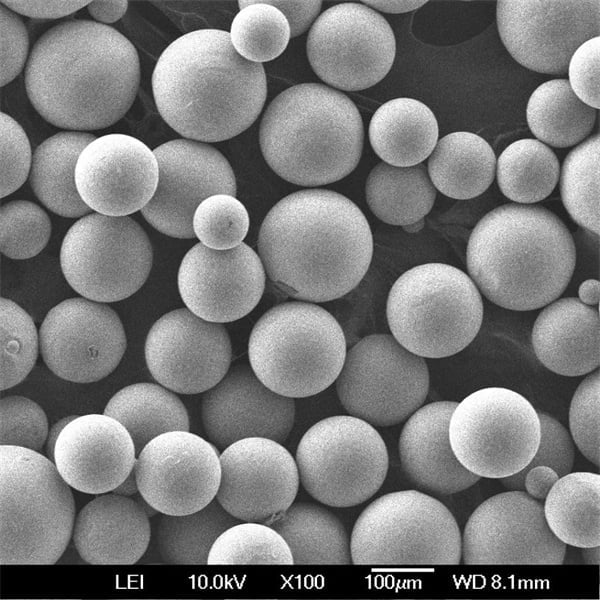
FAQs
| Question | Answer |
|---|---|
| What is the difference between titanium nanopowder and bulk titanium? | Titanium nanopowder consists of particles with dimensions in the range of 1 to 100 nanometers, while bulk titanium refers to the material in its larger, conventional form. The nanostructure of titanium nanopowder imparts unique properties, such as increased surface area, enhanced reactivity, and improved mechanical and thermal characteristics. |
| Is titanium nanopowder safe to handle? | Titanium nanopowder requires careful handling due to its increased reactivity and potential health and environmental concerns associated with nanomaterials. Proper safety protocols, personal protective equipment (PPE), and engineering controls should be implemented when working with titanium nanopowder. |
| What are the main applications of titanium nanopowder? | Titanium nanopowder finds applications in various fields, including catalysis, energy storage (lithium-ion batteries, supercapacitors, fuel cells), nanocomposites, biomedical implants and devices, aerospace components, electronics, and environmental remediation. |
| How is titanium nanopowder produced? | Titanium nanopowder can be produced through various methods, such as chemical vapor condensation, laser ablation, high-energy ball milling, and other advanced techniques that allow for the controlled synthesis of nanoparticles. |
| What factors affect the cost of titanium nanopowder? | The cost of titanium nanopowder is influenced by several factors, including particle size, purity level, production method, and quantity. Generally, smaller particle sizes and higher purity grades command higher prices due to the increased complexity of manufacturing and quality control measures. |
| How does the crystal structure of titanium nanopowder affect its properties? | Titanium nanopowder can exist in two distinct crystal structures: hexagonal close-packed (α-Ti) or body-centered cubic (β-Ti). The crystal structure influences properties such as strength, ductility, and corrosion resistance, allowing for tailoring the material’s performance to specific application requirements. |
| What are the challenges in working with titanium nanopowder? | Some challenges associated with titanium nanopowder include its increased reactivity, tendency for agglomeration, strict handling and storage requirements, potential health and environmental concerns, scaling up production, and limited availability of large-scale suppliers. |
| How is titanium nanopowder incorporated into nanocomposites? | Titanium nanopowder can be incorporated into nanocomposites as a reinforcement material, improving the mechanical properties, wear resistance, and overall performance of polymers, ceramics, and metals. Various techniques, such as melt compounding or sol-gel processing, can be used to disperse the nanoparticles within the matrix material. |
| Can titanium nanopowder be used in biomedical applications? | Yes, titanium nanopowder’s biocompatibility and corrosion resistance make it suitable for biomedical applications, such as orthopedic implants, dental materials, and drug delivery systems. Its nanostructure can enhance osseointegration (bone integration) and tissue regeneration capabilities. |
| What safety precautions should be taken when handling titanium nanopowder? | Proper safety protocols, such as the use of personal protective equipment (PPE), engineering controls (e.g., fume hoods, glove boxes), and appropriate waste disposal methods, should be followed when handling titanium nanopowder to minimize exposure and potential health risks. |
Share On
MET3DP Technology Co., LTD is a leading provider of additive manufacturing solutions headquartered in Qingdao, China. Our company specializes in 3D printing equipment and high-performance metal powders for industrial applications.
Inquiry to get best price and customized Solution for your business!
Related Articles
About Met3DP
Recent Update
Our Product
CONTACT US
Any questions? Send us message now! We’ll serve your request with a whole team after receiving your message.

Metal Powders for 3D Printing and Additive Manufacturing
COMPANY
PRODUCT
cONTACT INFO
- Qingdao City, Shandong, China
- [email protected]
- [email protected]
- +86 19116340731










